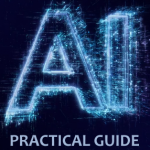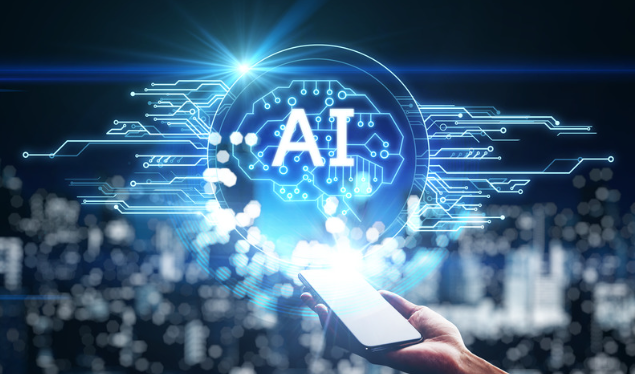Introduction
With AI having exploded into our consciousness over the last few months it’s time to look at the AI tools list we have created to ease your journey into this extraordinary, life-changing technology. Today, we embark on an intriguing journey into the universe of Artificial Intelligence (AI). AI is not just a science fiction concept anymore; it’s becoming an integral part of our everyday lives. It’s like a smart robot, helping us solve complex problems, make decisions, and even chat with us. But how does it all work? That’s what our “AI tools list” is all about. Let’s dive in!
Defining AI and Its Key Concepts
Artificial Intelligence, or AI, is like teaching a machine to mimic the human brain—learn from experiences, solve problems, and understand language. There are also two important subfields you need to know about:
- Machine Learning (ML): Imagine if you could learn from your past mistakes and experiences. That’s what ML is about – it allows machines to learn and improve from past data.
- Deep Learning: This is where machines go a step further and start to mimic the workings of our brain to understand and process data. This is like learning how to solve problems on your own, just like when you solve math problems!
And remember, data is the foundation of AI. Think of data as the books you study from – the better the books, the better you understand the subject.
Categories of AI Tools
AI tools are like the different subjects you study at school. They can be divided into categories such as coding and machine learning tools, language processing tools, visualization tools, hardware, data science tools, and AI platforms. Let’s take a closer look at each of these!
AI Tools List for Coding and Machine Learning
These are the basic tools that form the foundation of AI learning:
- TensorFlow: Think of this as the math textbook for AI. It’s a library filled with complex mathematical functions that have been translated into simple codes, which help our machines learn and grow smarter!
- Keras: This is like the friendly guidebook that simplifies the complicated stuff. It’s designed to help beginners understand neural networks, which are essentially the brain of an AI system.
- PyTorch: It’s an interactive workbook that’s perfect for homework and hands-on activities. It’s used to develop applications like understanding and responding in human language.
- Scikit-learn: This is the laboratory where AI gets to perform experiments with data and learn new things. It’s built for data analysis and is very handy when we want to uncover patterns or insights.
AI Tools for Natural Language Processing
This is where OpenAI opened the door for the recent explosion of AI into our consciousness with the launch of ChatGPT, an AI Chatbot, in November 2022. These are the tools that help AI understand and communicate in human language:
- OpenAI’s GPT-3: Think of this as a language tutor for AI, teaching it how to understand and generate human-like text. It’s like the AI is learning a new language!
- NLTK (Natural Language Toolkit): This is where AI goes to its language lab. It’s a platform that helps AI understand the complexities and nuances of human language.
- SpaCy: This is the advanced textbook for AI, teaching it the intricacies of natural language processing. It helps the AI understand, process, and respond to human language effectively.
AI Tools for Computer Vision
Just as we understand our world through our eyes, AI uses these tools to see and understand the digital world:
- OpenCV: Consider it as the AI’s biology textbook, teaching it how the eye works. It’s a library designed to help AI understand and analyze real-time visual data.
- Fast.ai: This is like the art class for AI, helping it to understand and interpret visual information better.
AI Tools for AI-Optimized Hardware
These are the physical resources that help AI function more effectively, like a desk and chair for good posture while studying:
- NVIDIA AI: NVIDIA provides the physical notebooks and pens for AI, i.e., the hardware tools for AI, ML, and HPC applications. It helps AI do its tasks faster and more efficiently.
- Google’s Tensor Processing Units (TPUs): These are custom-developed chips by Google, specifically designed to accelerate machine learning workloads. It’s like having a calculator for complex math problems.
AI Tools for Data Science and Analytics
These tools help AI make sense of vast amounts of data, much like interpreting a difficult novel in literature class:
- Tableau: It helps visualize data, like illustrating a story. It’s an essential tool for anyone working with data, providing interactive visualizations with an intuitive interface.
- RapidMiner: This tool is like a chemistry lab for AI, where it can experiment with data, run tests, and make predictions. It’s used for data prep, machine learning, deep learning, and predictive analytics.
- KNIME: This is an open-source platform that helps AI analyze data, report findings, and integrate with various data types. It’s like the AI’s personal research guide.
AI Platforms
AI platforms are like comprehensive schools that offer a variety of services and applications. Some of the notable ones are:
- IBM Watson: Watson is like the Harvard for AI. It’s a suite of AI services, applications, and tools that allows AI to learn various tasks and subjects.
- Google Cloud AI: Google’s platform is like a vast library for AI, providing a set of machine learning services for all types of tasks and studies.
- Microsoft Azure AI: Azure is like an all-in-one school, offering an extensive suite of AI services and capabilities. It’s a platform where AI can learn, grow, and achieve its potential.
Conclusion
So, that’s the end of today’s journey into some of our favorites in out AI tools list kit! You now know about the magical ingredients – AI tools – that make AI as brilliant as it is. Don’t hesitate to explore these tools and start your own AI adventure! And remember, we’re here to guide you every step of the way. Stay tuned for more

